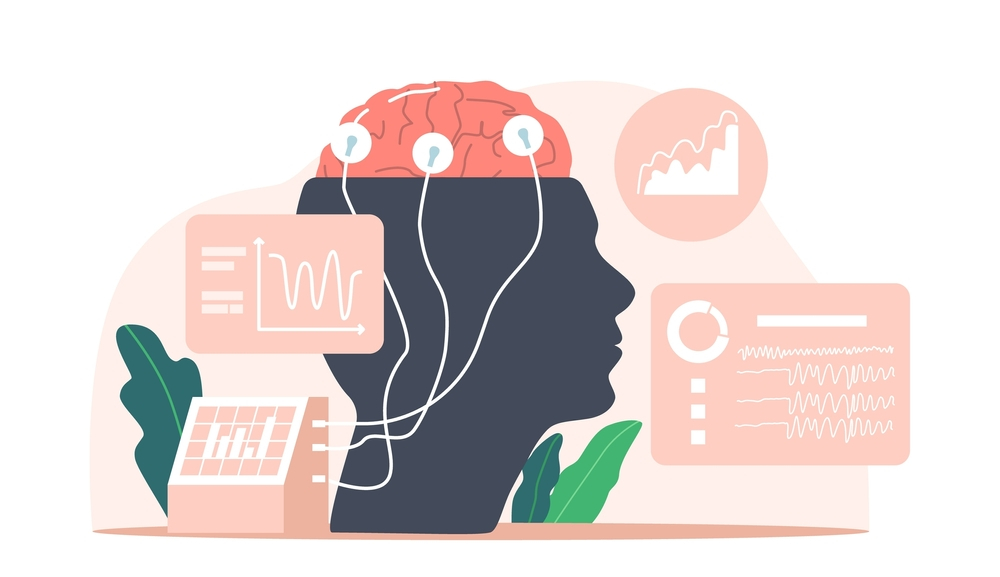In order to capture the electrical activity of the brain, a test known as electroencephalography (EEG Test) or sleep study test is performed. It is mostly used to check for brain illnesses like epilepsy.
The electrodes pick up electrical impulses that brain cells send to one another in order to communicate. These impulses are recorded by the electrodes on a computer system, where they are displayed as a trace—a collection of curving lines—which enables researchers to decipher a snapshot of brain activity.
EEG test at home in Delhi has been used and improved for almost a century, contributing to several breakthroughs in neurology and psychiatry and assisting doctors in the diagnosis and treatment of their patients.
Benefits of an EEG Test or a Sleep Study
EEG is often used to examine or track brain activity. It can be used in a variety of medical settings to help with the investigation of illnesses like psychiatric disorders, sleep disorders, seizure disorders, and other conditions.
It is typically used to identify brain disorders and track how they impact mental activities. It can be monitored over time to determine the efficacy of different therapies and is frequently used as a technique to diagnose epilepsy and other seizure activity variables. EEG tests are frequently used by neurologists and other medical professionals for a reason. They are non-invasive, accurate, safe, and reasonably priced.
The Evolution of EEG Testing
The electroencephalogram has been around for almost a century. The essay On the Electroencephalogram of Man was written in 1929 by German psychiatrist Hans Berger. The essay demonstrates a technique for capturing brain electrical activity. He accomplished this using a roughly built-in EEG machine, which produces some of the same wave patterns as current equipment.
Why Are EEG Exams Conducted?
It’s critical to identify the precise origin of any behaviors that a person may display as a result of their brain activity, such as seizures. Neurologists employ EEG testing to examine the electrical activity of the brain, which enables them to identify aberrant electrical impulse characteristics.
Any anomalies are found using the brain activity monitor by examining patterns and waveforms.
Why Do Physicians Advise Sleep Study Tests?
EEG tests are typically one of the first suggestions made when people have seizures or other events brought on by a brain anomaly. When a clinician suspects epilepsy, this is the main diagnostic method utilized.
EEG can also be used to demonstrate that the heart, not the brain, is what is causing an event. Physicians can use test results to guide treatment decisions and determine whether more testing is necessary.
How Does the EEG Function?
So how precisely do the little waves on the screen relate to what is occurring in the brain? The vast number of cells that make up the human brain is where it all begins. These cells are made up of roughly half neurons, and the other half serves to speed up the activity of the neurons.
This is accomplished by a network of neural crossing points between neurons known as synapses, which control the stimulation or inhibition of nerve activity.
Is an At-Home Sleep Study Test Accurate?
At-home tests don’t reliably detect all cases of sleep apnea. This can be potentially dangerous if you have a high-risk job or another health condition. This may lead to an in-lab sleep study. Whether your results are positive or negative, your doctor might still suggest an in-lab sleep test.
At Star Imaging Home Healthcare Pvt. Ltd, We Supply our own EEG-ECG video. The test is:
- At home – the test is performed at home without a hospital visit
- Long-term – the length of the test can vary between 3 and 10 days, depending on what your doctor recommends
- Outpatient – you carry a portable EEG-ECG device, and you can move freely around your house
Conclusion
If you are looking for a sleep study test at home, search for the best EEG test near me center, and you will find us topping the list.


